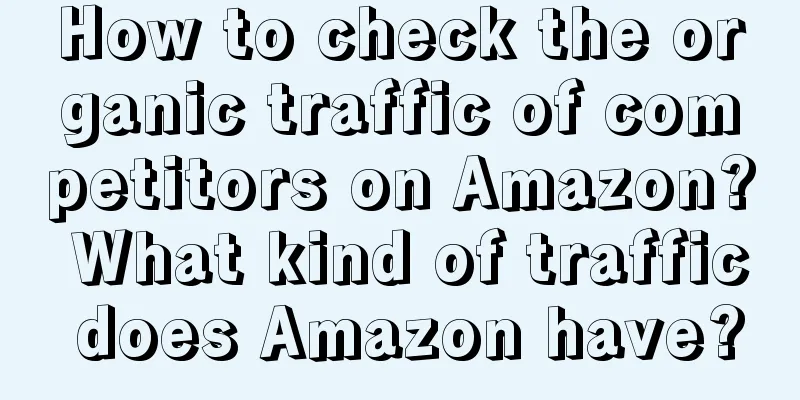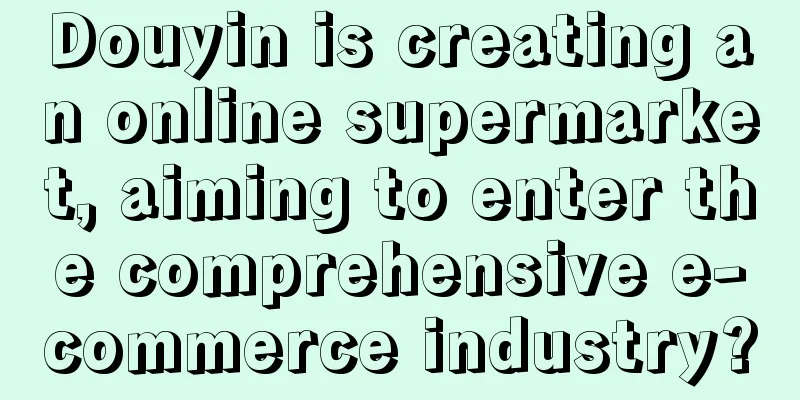At the end of 2022: My thoughts on brand-effect integration, consumption changes, and minimalist marketing

At the end of the year, several phenomena were discovered: A friend of mine in the TOC market planned to have senior executives attend several industry conferences to enhance the company's brand influence. The boss agreed, but later denied it. The reasons given were very consistent. This kind of conference requires sponsorship of hundreds of thousands of dollars, and one can set up a booth there. Although one can get a few scattered leads, they are basically all people in the industry and cannot be converted at all. In addition, the conference has an online live broadcast. Although the 30-minute speech may attract tens of thousands of views and leave some intentions, you still cannot convert them, so it is not very meaningful. Similarly, another company will cut its public relations budget by half next year. The reason is more direct: doing less public relations communication will not lead to conversion and is meaningless . Your public relations department had better think about how to link reading and sales together, otherwise transfer to the operations department and work in the private domain. Do you think it’s normal? It is not difficult to see that the leaders of the two companies place important work on "conversion", which is not surprising in the current environment. However, many bosses often mention keywords such as "want to increase conversion rate, brand is very important, establish high potential, and create influence" in daily meetings, but do not give budget, or very little, when taking action. What went wrong? In my opinion, it’s not that the boss doesn’t have a deep understanding of brand promotion, but that there is a cognitive gap on the “importance of brand” and he and the team have not reached a consensus, which invisibly increases the difficulty of implementation. Secondly, in the past few years, companies have wasted a lot of money on public relations, but in the end, they got nothing but millions of page views, which exacerbated the ineffective anchoring effect. How to solve marketing problems? I think there are four aspects:
01 Deviation of product-effect integrationThere are two types of brands that bosses understand: one is "potential brand" and the other is "kinetic brand". Let’s talk about the former first: Simply put, by using money at certain key points to constantly create topics and potential differences and occupy the high ground of value, users will identify with any part of the product and values, and then use the potential advantage to continuously drive the scale. for example: Yuanqi Forest has been working very hard in the past two years, from sponsoring "Our Band" in 2020 to betting on the Winter Olympics. In addition to the three athletes Gu Ailing, Xu Mengtao, and Su Yiming, boss Tang Binsen has been working tirelessly. In various media interviews, his down-to-earth views have resonated highly with front-line professionals and cutting-edge entrepreneurs. This kind of overall potential energy requires speed, public relations, and topic creativity, and then brings the brand to a certain position and height. As for the latter: At the beginning, the brand reputation in the market was not very big, but the product sales and scale developed rapidly; it mainly found the customer demand points, relied on fission, cheapness, or scarcity to quickly penetrate the market, and then forced recognition. for example: Nayuki's Tea is a company that was established less than 6 years ago. By creating internet-famous tea drinks, it has continuously refreshed people's perception of new-style tea. From its first store in Shenzhen to now, it has opened 584 directly-operated stores around the world and has more than 35 million members. The strategy is very clear within 1-2 years. The products are differentiated to make their milk tea different from other brands. Then, "marketing + low price" is frequently used to create popular products and quickly occupy the market. Brands such as Perfect Days and Hua Xizi all have these attributes. What can we see from the above? Potential brands cost more money and need more public relations to create topics, while kinetic brands are more effective and require supply chain capabilities. The key is that the market environment has been bad in the past two years, and reducing costs and increasing efficiency are the top priorities. As a result, cognitive bias occurs. My colleagues in the marketing department think that the importance of a brand lies in “how much money do I need to spend in a year to penetrate the brand”; while the boss is thinking, if all the “money” you mentioned is spent here, what if there is no effect? In other words, he is willing to invest 100,000 or 200,000 yuan to see the dual effects of branding and conversion to ensure positive feedback on branding and marketing. In the public relations' perception, 100,000 yuan is used for communication, and conversion may not be considered. Obviously, there are differences in opinions and understanding, which appear in "brand and effect integration" and "brand and sales synergy." What's the meaning? Brand-effect integration means both branding and conversion, which is quite difficult. Brand-effect synergy is different. It is not about doing both branding and conversion in one thing, but about how to maximize "this money" and classify it into two tasks, public relations and effect, so as to achieve synergy. as: When buying stocks, you can't put all 200,000 on one stock. You need 50,000 to buy conservative stocks, 50,000 to buy huge returns, and another 100,000 to buy stability. In other words, the budget given by the boss needs to be balanced. Therefore, we can draw the prerequisites, gain insight into the company's brand, and understand the specific momentum for next year and which direction the momentum will take. This is the foundation of branding or marketing. Only when the boss's cognition is in sync in this regard can the budget be allocated evenly. In the past, marketing focused more on how to do it, which was more of a methodology. According to the Golden Circle Principle, it was the outermost part (what). When everyone was doing it, they began to focus on the inner part (why). Why do we do marketing? In the eyes of most people, there are two answers: create a favorable environment to sell goods, and expand the scale to generate more transactions. However, throughout history, many companies have died in the busy pursuit of traffic and money, and only a few great brands have bloomed like roses in the business field made of rusty copper. Why is this? As early as 1960, Theodore Levitt believed in "Marketing Myopia" that the key to marketing is to continuously enhance brand value through a series of activities related to product creation, production, and provision to end consumers based on customer needs. In other words, the key to marketing lies in operations. The question is, even though we have invested heavily in seeding the market and our intangible brand assets are spread across major social media platforms, what is the conversion efficiency? If there is no conversion, should we still invest? In fact, we might as well look at the process from the perspective of the results. This is the same as getting along with strangers, from understanding, familiarity, building trust, intimate stage, and continuous deepening. Therefore, the essence of marketing is relationship management. Xiao Lihua, vice president of Alibaba, publicly stated in a speech that in the past, the retail thinking was that shopping guides were shopping guides and consumers were consumers. Now, consumers are KOLs and shopping guides are even more KOLs. In other words, we should not just spend money to attract customers and increase traffic, but serve existing users, organize various activities based on public platform rules, find ways to get them involved, and even empower them for this. The key here is to "get involved", and Lu Qingwei, general manager of industry development at Tencent Enterprise WeChat, highly agrees with this view. for example: Many brands have not achieved the best results with short video placements, mainly because they are still using the traditional social approach, combining dissemination on various platforms, finding some KOLs to promote products in the east, and doing public relations in the west. In the strategy of Douyin's top brands, success is not only about focusing on vertical promotion on a single platform, but also about co-creation. Some time ago, Huolala launched the "Labuladuo" dance challenge, which was participated by celebrities and KOLs, and users were also led to play with the topic. Those who were interested naturally became passers-by fans and were then slowly cultivated into core users. There are many such cases, such as smart home cleaning brands such as Chaimi, Adidas, and L'Oréal Paris. Therefore, in the future, brand marketing will not only be as simple as screening users and directing them to private domains on major public platforms, but will also require "positional thinking, co-creation thinking", and full-cycle user relationship management. Which platform a company uses to "acquire" new users, how it retains users, and how it continues to cultivate loyalty and word of mouth are the essence of marketing and the core of relationship management. 02 Consumption changesTo do all this well, we must first recognize what changes have taken place in consumers. Generally speaking, there are three aspects: 1. Focus on practicalityFrom the data on total retail sales of consumer goods, it can be seen that when consumers purchase products based on price and quality, a certain group of people still tend to make rational decisions. In other words , for the same category and the same consumer, there is the possibility of both consumption upgrading and consumption downgrading. for example: Taking the beauty industry as an example, users are changing from "buying expensive big brands to buying the right brands that they can relate to" , and substitutes are appearing everywhere in the market, becoming the first choice for white-collar workers. After surveying several female friends, we found that their daily consumption level is not low, especially in terms of light medical beauty, skin care, and clothing. However, as for the "vegetable basket women's bag", they believe that it is cost-effective for commuting, it will not be a pity if it is scratched, and the genuine brand is suitable for formal occasions, so they will consider the scene where the item itself will appear before making a decision. The core of consumer stratification is the "sense of gap". Here I want to bring up the Demand Theory. The traditional marketing demand theory is that when consumers buy a product, there is a demand for it, and the source of this demand is mostly desire. However, the three years of the pandemic have kept most people at home, and they have begun to think deeply about what they are thinking and want deep in their hearts. This has resulted in the method of simply using behavior to explain psychology no longer working. Everyone began to focus on their inner selves with "why" as the center, and found that their own behavior was disconnected from their inner selves. After changing their mindset, they began to solve real needs with high quality and ideal needs with ordinary substitutes. In the past year, we have seen the end of the Victoria's Secret Fashion Show and the decline of ZARA. Brands like Uniqlo and MUJI, which have relied on supply chain innovation and minimalism, have continued to grow. All these feedbacks show that this is not a trend in the value of brand symbols, but a re-examination of life by consumers from the inside out. Understanding this means understanding the essence of stratification. We cannot use simple behavior to infer needs, but rather find the contradictions between the user's inner desires and ideals. 2. Clear circlesThe stratification represents the consumer circle. In terms of brand preference, niche and popular coexist. The younger generation has a strong interest in small domestic brands and is more willing to spend time and energy to search and try products that suit their personality. Take me as an example: A few months ago, I actually paid for its appearance and bought an electric shaver called "YOOSE". The product's core competitive advantages lie in two aspects: "design and appearance". Driven by curiosity, I also joined its brand community. After checking the company's public information, the brand had over 130 million exposures on Douyin in 2021 and over 31 million exposures on Xiaohongshu. Its GMV exceeded 300 million in its first year, and most of the people were born in 1995 and 2000. In addition, circles are also reflected in other tracks. In the "2022 Enterprise Z Index Report" released by "Consumer Report", in the field of national trend clothing, Anta's index is as high as 98.6. Li Ning ranks second on the list, as high as 97.1. In the beauty industry, Generation Z consumers (45%) most frequently purchase emerging domestic brands (such as Huaxizi), with recommendations from friends, social needs, and cross-border collaborations being the main reasons for their choice. The same goes for hobby sports. In the second half of this year, when half of the friends were posting pictures of camping, skiing, surfing, frisbee, and paddleboarding, they became the "social currency" of some of the new middle class. What does this mean? The circle itself is an identity label, or an identification with values and culture. It represents consumption expression, consumption socialization, and consumption self-pleasing. Based on this logic, maximizing the value of goods is actually the intracranial value of the consumer group. 3. Psychological valueIn the M (M-Form Society) type society, an upward trend of "anxiety" is clearly observed; this feeling is different from the rise of the knowledge payment trend in 2016 (when there was investment enthusiasm, more money, and more demand), but now it is the opposite. With the expected supply-side transformation and technological upgrading within five years, the anxiety of the middle class about being replaced will become more pronounced as social instability increases. In the past, everyone thought that the post-90s generation was carefree. Now they are in their 30s and have become the backbone of society. Looking back, they will also become the sandwich generation (with elderly parents and young children to take care of) who are under tremendous pressure. For those around me: My friends who work with me in a large company (operations and marketing talents) didn’t worry about work problems at all in the past few years, but this year they started to feel obvious psychological pressure. In the past, they would change jobs immediately if they were not satisfied with the job, but now they can’t find a job to change, and they have to keep involuntarily in order to maintain stability. Quitting without a plan is even more terrifying. There are two options: One is to create your own media (video, pictures and text) and become a blogger, and provide consulting services, but the business is terribly small, and people without savings cannot even support a family business. The second is to open a store and create an offline brand, but eventually fall into a traffic dilemma, unable to just sit back and do nothing, and unable to win even if you want to. Behind this, the anxiety about knowledge has become more serious. In the past, people were afraid that they would fall behind because they did not know enough. Now everyone is expressing and producing knowledge, and the epidemic has made this worry even more serious. On the other hand, the psychological perception of the general public is changing. Only innovations that truly reduce or relieve anxiety for consumers can bring value. It may not be knowledge, but rather the shaping of new values and concepts for the middle class (such as cognition to satisfaction, redefining life achievements, etc.). 03 Three major difficulties in marketingBehind all these changes, it means that if brands continue to use traditional marketing methods and strategies, they will fail. So, what are the specific difficulties? 1. It is more difficult to create a hit productDuring this period, I have seen some social supply chain companies that serve large companies scratching their heads to come up with creative ideas and how to grasp the scale of content. A leading person reported that previous event marketing and topical variety shows could easily backfire, and people began to move closer to life and surrounding events. On the life tab, users spend most of their time focusing on questions such as: What are my daily necessities? Are they cheap? When will the express be delivered? Can I buy cold medicine? How to improve my body's immunity? People are more eager to gain certain knowledge and improvement suggestions, rather than content with "popular science + product function selling points", and soft implants can easily anger consumers. On the action tags, "anxiety, staying at home, targeted lying down, relaxation, internal consumption, non-resistance, Liu Genghong girl, self-improvement, 60-point parents, meditation" have become keywords , reflecting everyone's desire to eliminate the sense of low value and regain the initiative in life. All of this tests one's insight and the production of popular science content. However, one should not take advantage of the situation too much in the dissemination process and produce unnecessary empty content, which is more suitable for branding rather than conversion. 2. Channel terms are trivialA marketing manager of a snack company said that the biggest headache is not the difficulty in maintaining users, but the channels and terms that are simply too hard to learn. From private domain to public domain, from public domain to global domain, and from global domain to the introduction of digital tools, transformation is full of crises. For example: Douyin’s marketing field, content field, central field, 5A crowd, search optimization, Luban, massive engine, massive Qianchuan, Dou+, and e-commerce compass; Taobao’s three treasures and one coupon (store treasure, single product treasure, matching treasure, and coupon). Xiaohongshu’s professional accounts, brand cooperation, French fries, surprise boxes, customized stickers, hot topics, search easter eggs, SMS reminders, and native landing pages; Kuaishou’s magnetic stars, magnetic Taurus, and Kuaishou vermicelli. It also does not include various professional terms such as starting volume, spiral number starting, card live broadcast square, smooth explosion, live broadcast room traffic level, interaction rate, UV value, expert similarity, various drainage, and profitable hot products. You will find that each platform has a set of promotion methodology, but the boss is willing to try more. Behind the attempts, the team cannot find professional talents and has to learn by themselves. In the end, the budget is not fully utilized and detours are taken. There are even more enterprise service tools, including various SCRM software, marketing automation, financial management, etc. to help you build data and content assets, which sounds very fancy. After figuring it out, I found that it was just adding a friend, posting to a circle of friends, and collaborating on a spreadsheet online. It didn't seem to be so complicated for some companies, and the bosses were often troubled by all kinds of extra business information. 3. Too many marketing mixesOn the one hand, "I always want to do something fancy, but the result is a false demand . The boss often posts other people's public account tweets in the WeChat group, with a picture flow, reverse operation, creative posters, and then says in the group, you should also think about how to do it," said a new media friend. If you don't implement it, you will be scolded later. After you implement it, you find that this demand is the "boss's demand" and you ask everyone to forward it to their friends. It seems like a carnival but in fact it is trapped in the Curse of Knowledge. All this seems to have little to do with users. Secondly, when it comes to promotion, the boss always wants to do something big. Some people think that “money didn’t bring 10 times the effect” because the team or people are not good enough. After spending hundreds of thousands of dollars on Douyin but getting little conversion, or doing product promotion on official accounts, they will say, why are competitors doing so well and we are so bad? In fact, the marketing environment we face is very complex. The move you see others use to defeat the enemy may be their last move, and they may not even see the huge sunk costs invested previously. On the other hand, cross-border combinations, contrast marketing, and holiday marketing often catch the marketing department off guard ; many companies below the B round do not have all-round talents and the possibility of year-round planning, but the bosses often see other people bragging about holidays and "suddenly decide" to do it. When a "half-full bottle" is combined with people who "seem to understand but don't really understand", coupled with "last-minute cramming", and sometimes seeking external brain support, it is expected that the result will be unsatisfactory. In addition, there are many more complicated and trivial issues. So, in the marketing process, what should we focus on? To ensure the two-way merger of external channels and internal operations? I think we should return to the essence of business. 04 Return to minimalist marketingA few days ago, Liu Qiangdong said at an executive meeting: Don't give me so many new concepts and new words, you should return to the five elements of business common sense (product, price, service, cost, and efficiency). I agree with him very much. The more complicated the times are, the more marketing should return to "minimalism" . What exactly is minimalism? Simply put: your resources are limited, and you cannot put carrots in every box. You have to "have less and have more". Marketing is not about all-round development and evenly distributing effort. Instead, it is about focusing on key points and mobilizing all resources to maximize marketing. So, what should marketing focus on? 1. Customer segmentation and target customer selectionYou can think about it, why the recommended product pages you see every time you open Tmall, Douyin, and Xiaohongshu are different? Not all customers are your customers. Customer Segmentation is to use one or more dimensions to group customers, just like taking a knife and cutting a whole birthday cake horizontally and vertically. Each small piece of cake you see at the end is a market segment. Customer segmentation can be based on region, age, disposable income, gender, family role, and interest in a certain product; target customer selection is to select only some of all sub-customer groups as the main targets. User segmentation must follow certain principles. Early customers were limited by data and technology, and most of the work was done in CRM, because only in CRM can you obtain user consumption, labels, and portrait information. You can differentiate users based on level points, loyalty, and membership cards. Now SCRM products can completely solve this problem, but there is a problem: what if the brand does not get a specific portrait before promotion? At this time, each leading platform has a corresponding data analysis compass. Like: It took one year for the smart cleaning appliance brand Zhuimi to become a super brand in the smart cleaning field. When it started in March, based on data analysis and after recognizing the aesthetics of content consumption, it used celebrities, KOLs and other experts in various fields to promote the product and create topics. Let everyone produce various contents to leverage the entire Douyin C-end users. Finally, the sales continued to dominate the charts for three months, and the population growth scale reached 120 million. In general, the marketing layout can be divided into three parts:
This approach, on the one hand, helps companies solve content production problems, and on the other hand, abandons traditional social balanced marketing and low-price logic, and uses a positional approach to provide a one-stop solution from data mining to cultivation, screening, and conversion. 2. What tactics should be used to create high persuasiveness?First , marketing is a tool for brands. Therefore, under the long-tail business model, it is necessary to establish a long-tail positioning, USP (Unique Selling Proposition), also called a unique consumer proposition. This method essentially emphasizes what scenarios products and services provide and what value they provide. It generally creates a subconscious impression in the minds of consumers. You can first think about whether your brand has the ability to "let others know in one sentence where you are and what you are doing." Second , the brand anchor, also known as the anchoring effect; Yuanqi Forest and Luckin Coffee had similarities in the early stages of their launch. They found benchmark products and raised their position in the minds of consumers through public relations methods. In economics, cost means giving up the greatest value, and anchoring means making other people's goods and services become opportunity costs. You are responsible for the results of your choices and build barriers between your own advantages and competitors' disadvantages. Third , empathy and lifestyle shaping should be the top priority for many brands in their content marketing transformation. Focusing on the tiered customers, can we explore the keywords such as their life consumption, interests, etc. from an inward-looking (why) perspective? This can be a positive emotional massage or a negative emotional release. The key point lies in role transformation. Brands should examine the value solutions they provide from the perspective of life/survival/production, and change the preaching style to that of a partner. It is worth noting that we are currently entering a critical period of collaboration. We need to transform the promotion mindset into an "embracing mindset" and grow together with the influencers. After all, many influencers may have worked in Internet companies before and have a higher sensitivity to products and business. If you leverage large platforms and initiate relevant challenges, it is best to focus on a few major content directions throughout the year, which will actually help shape your intracranial value. 3. Which channel to choose?I have seen many bosses and marketing departments confused by this kind of problem. Assuming that you only have a budget of 3 million a year, the best way is to screen your customer groups and see which specific platform they are active on. If it is Douyin, you should focus two-thirds of your energy on it, and use the other one-third for product promotion on channels such as Xiaohongshu and official accounts. Some companies always want to strike a balance, which is not advisable. In order to increase sales, some single brands open JD.com, Tmall, Douyin, and their own private shopping malls, believing that this can bring in natural traffic. As a result, each platform required a colleague to be responsible for it, and in the end, none of them were done well, and the manpower and promotion costs were wasted. Don’t be fooled by the promotion methods of big brands. Just because you can see all kinds of marketing topics on various platforms and during festivals, it doesn’t mean you can handle them . When you have enough strength, expanding your boundaries is the stable way. Customer base, persuasiveness, and channels are the foundation of minimalist marketing. If you understand these three, your luck should be good. Assuming the supply chain has advantages, similar to tea drinks, you can launch dozens of hot-selling products a year. According to the logic of kinetic energy, focus on one platform and play with different tricks. You can always leave assets for brand compounding. To summarize: The essence of marketing is relationship management.
Author: Wang Zhiyuan Source: WeChat public account "Wang Zhiyuan (ID: Z201440)" |
<<: Douyin instant retail brings in a “new ally”
>>: After being “released”, young people have really changed
Recommend
Why can't I pay on delivery on Lazada? How can I solve this problem?
Lazada is a platform in Southeast Asia that Alibab...
How to transfer warehouses on Amazon? How to calculate the transfer fee?
When running an Amazon store, if there is too much...
With 1.58 million followers in a single month, Xiaohongshu has seen a "big comeback" by the end of the year
In just one month, the number of followers increas...
Can Shopify sell globally? What sites does Shopify have?
In today's globalized business environment, ma...
What are the fees for individual cross-border e-commerce? How can individuals do cross-border e-commerce?
With the rapid development of cross-border e-comme...
How to deal with Amazon's taxes? How to apply for tax refund?
As cross-border e-commerce is booming, Amazon, as ...
How to write Amazon POA? What is Amazon Action Plan?
There are many things we need to do after opening ...
Can ZARA’s live show go beyond the path of selling high-end products?
This article explores how ZARA attempts to take a ...
Does Amazon US FBA need to pay taxes? Details required!
Regarding Amazon's US FBA, as a merchant, you ...
What are the Wish distribution tips? What should I pay attention to?
Today, I will introduce you to the content of open...
How to list products on Amazon without a brand? How to do it?
Most of the merchants who open stores on Amazon ha...
Let’s have some dried dry goods: 3 ways to find potential incremental categories
It is an industry consensus that fast-moving consu...
eBay launches new return options and social pages
eBay Australia announced that it has improved the ...
How to hire people for cross-border e-commerce? What are the skills?
On the cross-border e-commerce platform, it is dif...
TikTok: Outbreak, Chaos and Crisis
Douyin Dabo is not only an increase in sales, but ...









